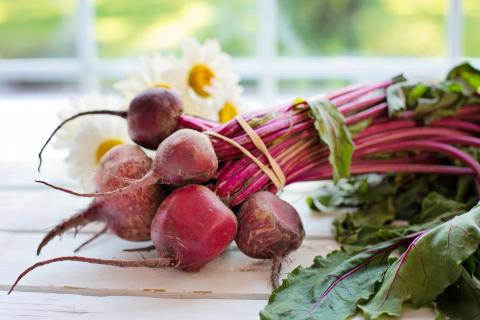Gardening in a Wet Season

There is a backyard vegetable garden a few miles from my house that I drive by and admire every summer. I don’t know the gardener but his garden is obviously a labor of love and I usually see him out there tending it daily. This year, however, I rarely see him, because it’s been so wet! His tomatoes are recovering nicely, but most of his typical crops are behind or gone, and big portions of the garden have puddles or look soggy.
Fortunately, not all gardeners are having such a disappointing season. For those who have sandy soil, raised beds, or gardens at the top of a hill, the plants are finally taking off after our rainy spring. Of course, those same gardeners probably had a rough year last year because they had too much drainage in the drier year.
Moving your garden mid-season is probably not an option, and if your yard is small, moving it, period, is not an option, so what can you do? First, it is not likely to keep raining all summer long. This is a good year to focus in on late season crops. Broccoli does really well when you transplant it outdoors in late July. Unfortunately if you didn’t start the plants in trays in early June, it’s too late, but other things will do well if you plant them a couple weeks from now. Spinach and lettuce tend to bolt in the hottest part of the summer, so they do best if you plant them at the end of May or late July or August. Beets will also do fine if you plant them now. Cucumbers, zucchini and summer squash can all be replanted now and have a good chance of bearing something before the first frost. Peas can be planted about two months before the first frost.
Second, raised beds don’t have to be permanent structures. If your garden is even somewhat flat, you could just use a shovel to pile up the soil until you get a bed that is 4-6 inches taller than the surrounding walkway. It will hold its shape with very little maintenance for many seasons if you till it with a broadfork instead of a rototiller. I would encourage you to wait until the soil dries out a little before you get out the shovel though. Shoveling soggy soil is harder work than it needs to be and damages soil structure.
Finally, if you’ve ever wanted to try an overwintered crop, this could be the year. Onions are the easiest crop to try this technique out on. A few years back I collaborated on a research trial with some colleagues where we planted onions in the fall and harvested them the next spring. We covered some of them with row cover and greenhouse plastic and left some of them exposed to the elements. The covered plots unsurprisingly yielded much better, but even the uncovered plots gave us harvestable onions in June and July. You need to start the seeds in August or September though, so if you are going to do it don’t wait too long. For more information see http://tinyurl.com/OverwinteringOnions.
Garlic is another crop that is planted in the fall and harvested the next spring, but the only winter protection you need to provide is straw mulch. For more information see http://tinyurl.com/GrowingGarlic.
If all else fails, or you have an exciting vacation lined up for the fall and don’t want to plant things you won’t be around to harvest, consider a cover crop. Buckwheat can be planted now and will help keep the weeds from taking over, just make sure you mow it off when it flowers so that it doesn’t become a weed itself. It is also an attractive plant for pollinators. Oats are another option for gardens because it winter kills, making it easy to till under next spring. For more information on cover crops see http://covercrops.cals.cornell.edu/
